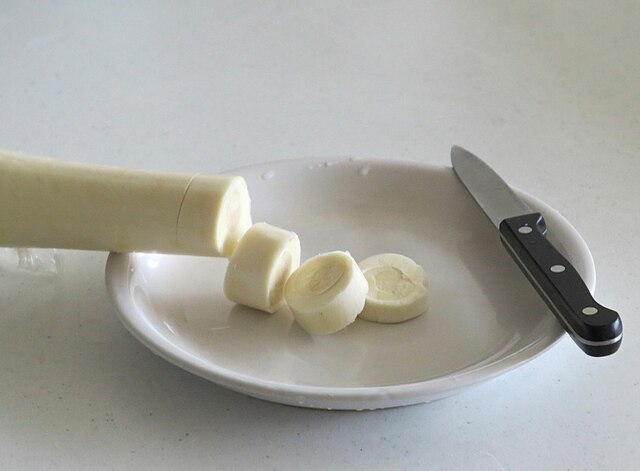Shipments of prepared palm hearts from Peru rose to approximately 3,273.5 tonnes in the January-August 2025 period. This marked a 25% increase year-on-year (y-o-y) despite gaining vegan cuisine at home.
According to Agraria, quoting an Agrodata report of October 2, 2025, the exports earned the country a free-on-board value of US$9.667 million.
The dispatches overtook January-August 2024’s nearly 2,598 tonnes, with France partaking of 46% share vis-á-vis 36% in 2024.
France bought US$4.482 million while the United States secured nearly $2.518 million. Spain, Chile and Canada followed suit with $1.494 million, $346,778, and $225,535, respectively.
Canning company Caynarachi S.A. contributed over US$8.821 million or 91% of the shipments. Next were Apropal L.T.D.A and Agro Industrial San Pedro S.A.C. with respective $496,452 and $347,968.
At the Heart of Domestic Vegan Cuisine
Although much of the Peru palm hearts’ production ships externally in canned form, it also boasts a thriving vegetarian profile at home.
Peruvians are increasingly using the inner shoots of palms (such as the Euterpe edulis species) to make ceviche without the fish.
Instead of marinading raw fish, locals are combining hearts of palm with the traditional ingredients of ceviche such as lime juice.
Because these shoots have the same soft firmness as seafood, they make for perfect vegetarian replacements.
They are also common in local “crab” cakes that add a subtle flavor without sacrificing the sweetness of the dough product.
But because production in northern Peru’s forests such as Loreto del Peru often attract sustainability watch, output fluctuates and palm hearts prices alter accordingly.
Thus, with home demand for vegan use rising and exports increasing, Peru’s prepared palm heart market remains prone to production forces. The below statistics take the idea further by examining the place of these shoots in international trade.
Peru Hearts of Palm Trade Statistics
Peru is a major source of hearts of palm, which it trades internationally in canned form. In 2021, the country claimed the third spot worldwide in exports totaling 4,087.86 tonnes, worth US$9.465 million, according to the World Bank. Only neighbors Bolivia and Ecuador with 5,221.3 and 28,941.7 tonnes, respectively, shipped more. By 2023, the export value of prepared or preserved palm hearts by Peru had hit $13.5 million while imports approximated US$123,000.
The leading export destinations for Peru’s prepared or preserved palm hearts are perennially France and the United States. In 2022, for example, France received US$1,960 tonnes while the U.S. US$937,833. The two destinations claimed a combined total exports share of 60%.
Which are the major canned palm heart companies from Peru?
Peru’s canned palm heart export trade is a monopoly of three companies. One of these is Caynarachi S.A., with an export share of 82.3% (January-August 2024) or 91% (January-August 2025). The rest 10% goes to Apropal L.T.D.A and Agro Industrial San Pedro S.A.C. Their respective shipments in the first eight months of 2025 reached US$496,452 and $347,968.
Who farms edible palms in Peru?
Family growers normally cultivate edible palms for their inner shoots in mainly the Peruvian north. For instance, export company Apropal L.T.D.A. works with cooperatives of 300 families from the San Martin and Loreto del Peru regions.
